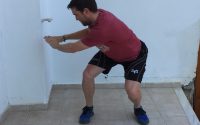Understanding Movement
I love learning and I loved my degrees in Sports Science and Physiotherapy. I guess I was ultimately more inspired by my physio degree, which led me to do post grad studying in human movement. It was while exploring this fascinating subject that I started writing and teaching about movement.
I’ve always felt that movement is such a key thing in therapy. I don’t know why I’ve always felt that, but it was always there. Now we are a good decade or so on and my belief in movement have only strengthened. Though of course my thoughts and practise have evolved over the years, there are plenty of core beliefs that remain. It is these core principles that I feel are most important to get across to anyone wanting to be the best therapist they can be.
The thinking that really changed things for me came from John Hardy, who passed on what he’d learned in America from Gary Gray and Dr David Tiberio. It was the change in emphasis from treatment techniques to the principles behind those techniques that opened my eyes.
Even as a personal trainer I was very focussed on what was best for my clients/patients, so that was not an issue for me. However, I enjoyed thinking less about the techniques and more about building assessment and treatment strategies around my patients specific needs.
The other big shift in thought process was more about the understanding of the anatomy and it’s function. The big lightbulb moments were:
- Learning that movement is DRIVEN and what drives it
- muscles react, so we learn anatomy the wrong way around!
- exercises are more effective when the target is subconsciously driven
It was later in my journey that pain science became a more prominent part of my thought process, but for me it has made movement driven therapy even more important. Hopefully my skills and experience have evolved over the years, however, it will be this series of blogs that covers the key elements that I feel helped me transition from student to therapist.


